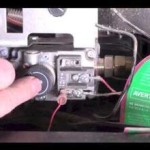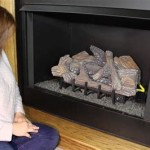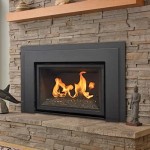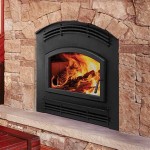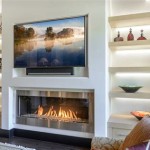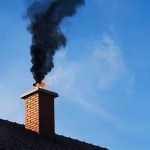Propane Fireplace Insert Installation: A Comprehensive Guide
Propane fireplace inserts offer an efficient and aesthetically pleasing alternative to traditional wood-burning fireplaces. They provide consistent heat, are easier to operate, and significantly reduce the risk of smoke and creosote buildup in the chimney. Understanding the process of propane fireplace insert installation is crucial for both homeowners considering the upgrade and professionals involved in the installation itself. This article details the key aspects of propane fireplace insert installation, covering preparation, the installation process, and safety considerations.
Preparing for Propane Fireplace Insert Installation
Prior to commencing the installation, several preparatory steps are essential. These steps ensure a safe and compliant installation that maximizes the efficiency of the propane fireplace insert. The first step is a thorough assessment of the existing fireplace and chimney.
The initial step involves measuring the existing fireplace opening. The dimensions are critical in selecting a propane fireplace insert that fits correctly. Inserts are designed for specific fireplace opening sizes, and choosing an improperly sized unit can lead to installation challenges and reduced heating performance. Measure the height, width, and depth of the firebox with precision.
An equally important part of the preparation process involves inspecting the chimney. A professional chimney sweep should conduct a thorough inspection to assess the chimney's structural integrity and identify any potential hazards, such as cracks, blockages, or creosote buildup. Significant damage may necessitate repairs or relining of the chimney before the insert can be installed safely. Creosote buildup, a flammable byproduct of wood burning, poses a significant fire risk and must be removed completely. The chimney must be clean to meet safety standards for venting the propane fireplace insert. Many jurisdictions require a stainless steel liner specific to the insert.
Determining if a propane line is already available is another preparatory step. If a propane line is not already present, the homeowner must arrange for a qualified gas line installer to run a new line to the fireplace location. This process involves obtaining the necessary permits and adhering to local building codes. The gas line must be sized appropriately to supply the insert with the required amount of propane. It’s crucial to factor in the BTU (British Thermal Unit) rating of the insert when sizing the gas line.
Selecting the appropriate propane fireplace insert is vital. Consider factors such as the size of the room to be heated, the desired heating output (BTUs), the aesthetic style, and the features offered by different models. Research different brands and models, read reviews, and consult with a fireplace professional to determine the best option for the homeowner's specific needs and preferences. Evaluate features like thermostatic control, remote operation, and blower fans, which can enhance the user experience.
Gathering the necessary permits is a often overlooked step. Most municipalities require permits for installing propane fireplace inserts. Contact the local building department to determine the specific permit requirements and application procedures. Failure to obtain the necessary permits can result in fines and delays.
The Installation Process: Step-by-Step
The installation process requires careful attention to detail and adherence to the manufacturer's instructions. It is generally recommended that a qualified professional perform the installation to ensure safety and compliance with building codes.
The first step in the physical installation is preparing the fireplace opening. This involves cleaning the firebox thoroughly and removing any remaining ash, debris, or loose bricks. Ensure the firebox surface is clean and free of obstructions. If necessary, patch any cracks or gaps in the firebox with refractory mortar. This will help to create a tight seal and prevent heat loss. Install a block-off plate at the damper. This plate seals the fireplace opening from the chimney above, preventing heat loss and drafts.
The next step involves installing the chimney liner. The stainless steel chimney liner is crucial for venting the propane fireplace insert safely and efficiently. Follow the manufacturer's instructions for installing the liner, ensuring it is properly connected to the insert and extends to the top of the chimney. The liner must be appropriately sized for the insert and the chimney’s dimensions. Secure the liner at the top with a top plate or cap to prevent debris and moisture from entering the chimney.
Connecting the gas line is the next phase, and is a critical safety step. Connect the propane gas line to the insert's gas valve, following the manufacturer's instructions and local gas codes. Use appropriate fittings and sealant to ensure a leak-free connection. After making the connection, perform a leak test using a gas leak detector or soap solution to verify that there are no gas leaks. Address any leaks immediately.
Once the connections are checked, the propane fireplace insert can be positioned and set in place. Carefully slide the propane fireplace insert into the firebox opening, ensuring it is properly aligned and seated. Some inserts may require shimming to level them within the firebox. Refer to the manufacturer's instructions for securing the insert in place.
The wiring of the electrical components is required for many propane fireplace inserts. Connect the insert's electrical components, such as the blower fan and ignition system, to the electrical supply, following the manufacturer's instructions. Ensure the electrical connections are properly grounded and protected. Some inserts may require professional electrical wiring.
The final step in the installation process is testing and verifying that everything is working properly. Turn on the propane gas supply and test the fireplace insert to ensure it lights properly and operates as intended. Check the blower fan, thermostat, and other features to ensure they are functioning correctly. Verify that the venting system is drawing properly and that there are no signs of backdrafting.
Safety Considerations and Code Compliance
Safety is paramount during and after the installation of a propane fireplace insert. Adhering to safety guidelines and local building codes is essential to prevent hazards and ensure the safe operation of the insert.
Gas leak detection is a major concern when working with propane. Always perform gas leak tests during and after installation to detect and address any gas leaks. Use a gas leak detector or soap solution to check all gas line connections and fittings. If a gas leak is detected, immediately shut off the gas supply and contact a qualified gas technician to repair the leak. Never use an open flame to detect gas leaks.
Carbon monoxide (CO) safety is also of critical importance. Install carbon monoxide detectors in the vicinity of the fireplace insert to monitor for CO levels. Carbon monoxide is a colorless, odorless gas that can be fatal. Ensure the detectors are functioning properly and have fresh batteries. If the detector alarms, evacuate the premises immediately and contact the fire department or a qualified technician.
Proper venting is essential for safe operation. Ensure the propane fireplace insert is properly vented according to the manufacturer's instructions and local building codes. Improper venting can lead to carbon monoxide buildup and other hazards. The chimney liner must be appropriately sized and installed to ensure proper venting occurs. Regularly inspect the venting system for any signs of damage or blockage.
Ensuring code compliance requires more than just permit acquisition. Adhere to all local building codes and regulations when installing a propane fireplace insert. These codes are designed to ensure the safety and integrity of the installation. Contact the local building department for information on specific code requirements. Schedule an inspection with the building department after the installation is complete to ensure compliance.
Regular maintenance extends the life of the unit. Schedule regular maintenance for the propane fireplace insert to ensure it continues to operate safely and efficiently. This includes cleaning the burner, inspecting the venting system, and checking the gas line connections. Follow the manufacturer's recommendations for maintenance procedures and schedules. A qualified technician should perform annual inspections and maintenance.
Finally, it is important to familiarize yourself with the owner's manual. Read and understand the owner's manual for the propane fireplace insert. The owner's manual provides important information on operation, maintenance, and troubleshooting. Keep the owner's manual in a safe place for future reference.

Why Install A Propane Fireplace Paraco Gas

How To Select And Install A Gas Fireplace Log Set Fireplaces Direct Learning Center

How To Install A Gas Fireplace Insert This Old House

Gas Fireplace Inserts Quick Install New Propane Usage

Convert To Gas Installing Fireplace Inserts Doctor Flue

Propane Fireplace Inserts Gas Log Sets Tunkhannock Pa Ace Robbins

Gas Propane Fireplace Inserts

Fireplace Insert Guide Fireplaces Direct Learning Center

Propane Gas Fireplace Inserts Delivered Installed In Ct Works

How To Choose A Propane Fireplace Insert
Related Posts

